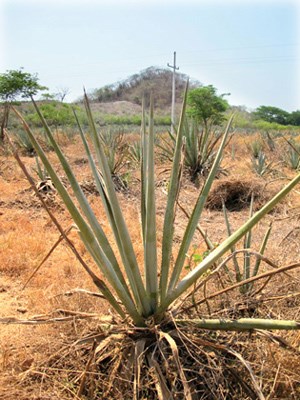ACCORDING to Mexican law, tequila can be produced only in the state of Jalisco and limited regions in the states of Guanajuato, Michoacan, Nayarit and Tamaulipas.
Yet here we are, bumping down a rutted track of soft dirt in the state of Sinaloa, about an hour's drive from Mazatlan, with the distinctive spiny branches of the blue agave plants used in tequila's production sprouting all around us.
This is the Los Osuna Hacienda, one of the only remaining factories in the state that makes a spirit from the plant.
The distilling process is the same, but because of the NOM (Norma Oficial Mexicana), this liquor can't be called tequila, and instead is dubbed destilado de agave.
The hacienda - a charming collection of low-slung, yellow-painted buildings - has been a family-owned business for 136 years, says our guide, Luis Daniel.
It closed, along with other factories in the region, late last century but reopened to produce very small quantities of 100 per cent blue agave spirit, and as a draw for tourists.
Though the distillation process remains the same as it was more than a century ago, much of the equipment has improved. The Los Osuna factory displays technology new and old - from the traditional underground ovens where the centre of the eight-year-old agave plants (called pinas or pines) are steamed, to the burrow-pulled stone wheel that was once used to crush the cooked pines to extract the juice. These days, modern machines do the crushing, and Daniel lets us sample the resulting sweetness as he tears the baked agave into strips for us to chew on.
"No sugar needs to be added," he explains as we gnaw on the soft chunks. "This is natural sweetness. More sugar equals more alcohol."
Once the juice has been extracted it goes into tanks, along with yeast and water, for five days of fermentation.
The fermented juice, called mosto, is transferred to the still where heat causes the alcohol to rise as a vapour, through a pipe and then condense back to a liquid. Like tequila, it's then distilled a second time to remove impurities.
The result is 60 per cent alcohol, 120 proof spirit. "We call it 'To Kill You,' " jokes Daniel. In fact, to meet legal requirements, the alcohol must first be reduced.
The spirit is then aged: just nine days to make blanco, 11 months in American oak to make Maduro Reposado, and three years in the barrel for the Anejo.
Daniel pours a snifter of the Maduro for us to sample. Because it is 100 per cent agave, it has no additives that are likely to cause next-day distress.
"You don't need to mix it. Drink it like a good Cognac or a good Whiskey. You sip it."
He's right. It's got body, is subtly smoky and while there's heat after swallowing, it's a smooth sip.
Los Osuna is hard to find north of the Mexican border, but after the tour, guests are welcome to buy bottles at the tasting bar, and to refill their shot glasses as many times as they like.
"The limit is not the sky," says Daniel. "It's the floor."
For more information about visiting Los Osuna, go to lososuna.com.mx.



